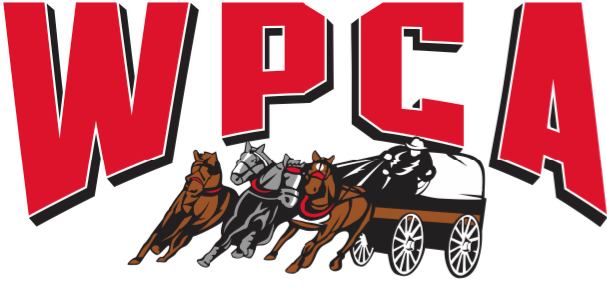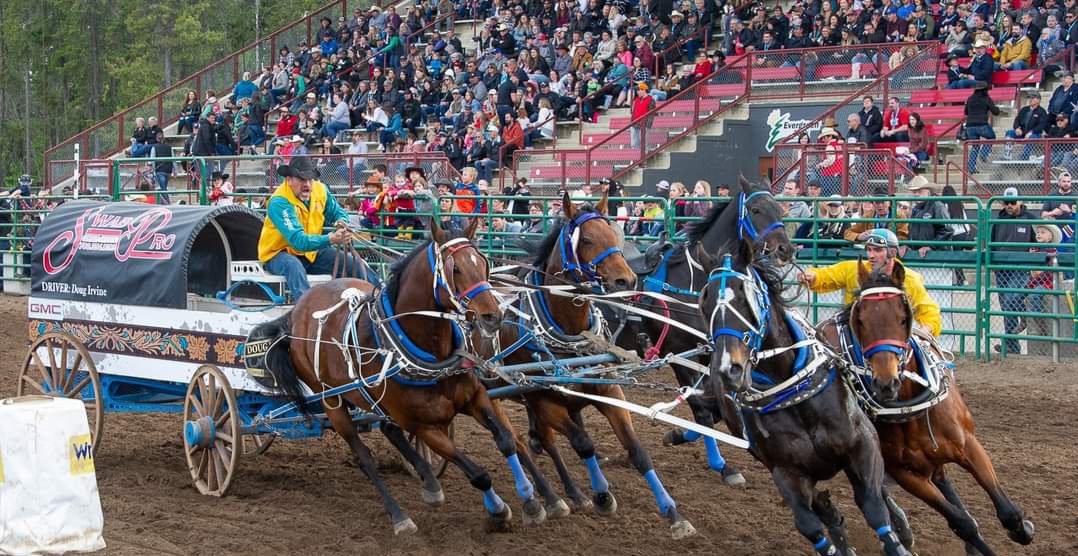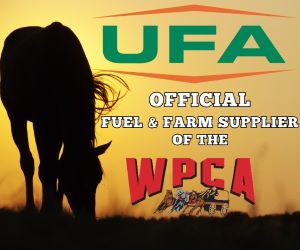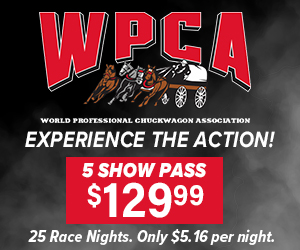By Laurence Heinen
Doug Irvine would like nothing more than to see history repeat itself in Grande Prairie to start off the 2023 WPCA Pro Tour season.
To do that, Irvine will have to defend his 2022 Grande Prairie Stompede chuckwagon racing title that he won when his Swab Pro (2018) Ltd. outfit edged out Kirk Sutherland’s Hansen Ford rig by just 5/100ths of a second at the finish line of the championship dash.
“I think everything last year, all the stars just aligned,” said Irvine, who captured his first career Grande Prairie Stompede championship late last May. “You kind of need everything to go right and last year it did. I don’t know what this year will entail. You never know until the first horn blows.”
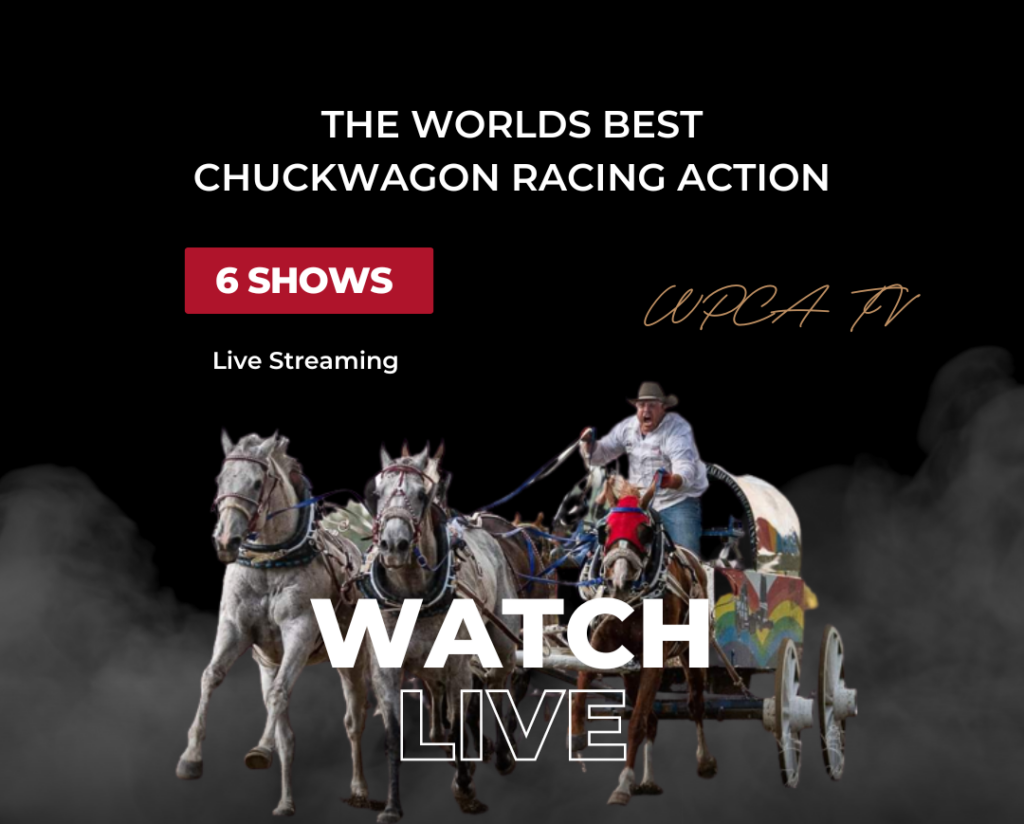
Also in the mix at last year’s opening show was Chad Fike, who made a furious charge down the finish line, but ultimately ended up in third spot. Kale Lajeunesse also qualified for the dash, but had to settle for a fourth-place showing off of barrel No. 4.
“It was a good a good finish for the crowd,” Irvine recalled. “Chad Fike was really coming hard too, so another 100 yards it would have been really close.”
As for the upcoming chuckwagon racing season that gets under way in earnest from Wednesday to Sunday in Grande Prairie, Irvine said he’s hoping to be in the mix once again with a goal of improving on his 10th place showing in last year’s final driver standings race.
“I’m unbeaten so far at home, but it definitely gets tougher when you actually get guys to run against,” said the 47-year-old reinsman, who has been training his horses since early April on his track at his home near La Corey, Alta., which is located about 20 minutes north of Bonnyville. “Everybody should be fit and ready to go. It should be a decent year. Everybody’s had a good spring training, I would think.
“Everybody in the later heats brings it every day, so you can’t take a day off,” he continued. “You’ve just got to keep grinding it out through the summer and hopefully you get the right draw and you get the right breaks and things go your way.”
Irvine started off his training camp with 40-45 horses before he settled on bringing 21 of them to Grande Prairie.
“There’s a few that are home on oats and stuff in case we change our mind, but this is pretty much what we’ll have for the rest of the year,” said Irvine, while noting that five rookies proved themselves enough to work their way into his racing lineup this season. “You’ve got your veterans that are already stencilled in and then a bunch of rookies that are trying to make an impression so they can come and live the good life on the road.”
Fellow driver Rae Croteau Jr. is also hoping some of his new horses will make an impact to help him out this season.
“I kept everything in through the summer and then we bought another 10 horses and kind of sourced out a certain style of horses and a little better quality of racehorse,” said Croteau, who returned to race on the WPCA circuit 12 months ago after taking six years away from the sport. “They were tougher to find this year, but I’m excited. They’re horses that have a little more run and a little more speed – stuff that I need to add to the lineup.
“They’re a classier type of racehorse that have won some money at the racetrack. You’re teaching them a new job. It’s just like any athlete. They’re very competitive. If you know a guy that plays hockey, he’s usually good at basketball or anything you try to play against him. He’s just competitive and has that will to win, right. We’re teaching a racehorse that’s won a couple hundred (dollars) or $300,000 at the racetrack. They’re hungry and they like to run and they want to perform.”

As for where his new recruits will fit into his lineup, Croteau said that the animal athletes themselves decide whether they want to become right or left leaders, right or left wheelers or outriding horses.
“You let them tell you where they belong,” said the 41-year-old reinsman, who now resides in Rapid View, Sask. “A lot of them, you just start driving and you put them into places and you expose them into different areas and they’ll either tell you that they like it or they don’t just by how they perform.
“Maybe some of them are just naturals out of the gate or some need a little more work and time to absorb the energy and all the crowd and all the noise that’s going on. It can be a lot to take in at times.”
Kurt Bensmiller agreed with Croteau’s assessment.
“We don’t decide it,” said the veteran 40-year-old driver from Dewberry, Alta. “The horses decide which position they’re going to go in for sure and not all stick to the position we think they’re going to go in. They change the way they drive us.
“It’s no different than hockey. Right wingers aren’t usually left wingers and centres can’t usually play D. Some can, but the elite ones seem to like one position and they’re really good at it.”
